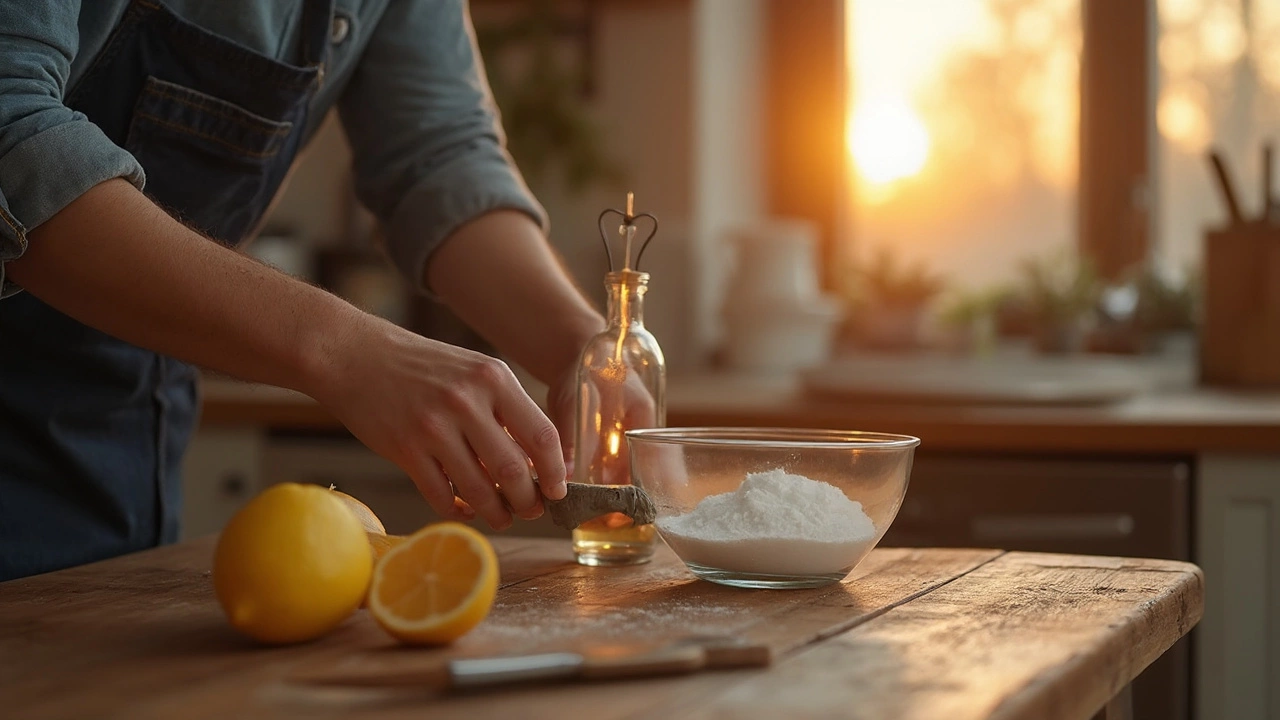Baking Soda Oven Cleaner: Simple, Safe Way to Sparkle Your Oven
If you’re tired of harsh chemicals and want a kitchen‑friendly solution, baking soda is the answer. It’s cheap, non‑toxic, and works great on baked‑on grease. In this guide you’ll get a quick recipe, step‑by‑step instructions, and handy tricks for the toughest stains.
How to Make Your Own Baking Soda Oven Cleaner
All you need is two pantry staples: baking soda and water. Mix ½ cup of baking soda with enough warm water to form a spreadable paste—think thick but not crusty. If you like a fresh scent, add a few drops of lemon juice or essential oil; it’s optional but makes the job more pleasant.
Here’s the basic process:
- Cool the oven completely; a warm oven can make the paste dry too fast.
- Spread the paste over the interior walls, focusing on the bottom and the door glass. Use a silicone spatula or an old brush.
- Let it sit for at least 30 minutes. For heavy grease, leave it overnight.
- Wipe away the dried paste with a damp cloth. You’ll see a lot of grime lift off with it.
- Finish with a spray of white vinegar on any remaining spots. The fizz helps break down residual residue.
- Rinse with a clean, wet cloth and dry with a towel.
The result is a clean, streak‑free oven without any lingering chemical smell.
Pro Tips for Stubborn Grease
Sometimes baked‑on sauce hardens into a solid crust. When the basic paste won’t budge, try these tricks:
- Heat it up. Turn the oven to a low 150°F (65°C) for 10 minutes before applying the paste. Warm surfaces let the baking soda work faster.
- Combine with vinegar. Sprinkle a thin layer of baking soda, spray vinegar over it, and watch the fizz. Let it bubble for a few minutes, then scrub.
- Use a non‑abrasive scrubber. A soft nylon brush removes grime without scratching the enamel.
- Repeat the cycle. For really tough spots, apply a second coat after the first wipe. Two rounds usually do the trick.
Safety is simple: wear gloves if you have sensitive skin, and keep the mixture away from the heating elements. Baking soda is non‑corrosive, so you won’t damage the oven’s interior.
When you finish, store any leftover paste in a sealed container for future touch‑ups. It stays good for a few weeks, and you’ll have a fast solution for spills that happen between deep cleans.
While DIY works for most homes, there are times when professional help makes sense—like when the oven’s coating is damaged or the self‑cleaning cycle fails. A professional cleaning service can safely remove built‑up grime and check for hidden issues.
Choosing a baking soda oven cleaner gives you three big wins: a healthier home, lower cleaning costs, and a kitchen that looks brand new. Give it a try on your next cleaning day and say goodbye to harsh chemicals forever.

Best Homemade Oven Cleaner: Easy DIY Methods for a Sparkling Oven
If you’re tired of the chemical stench left behind by store-bought oven cleaners, there’s hope in your kitchen cabinets. This article digs deep into the science and strategy behind the best homemade oven cleaners, showing you exactly what works, why it works, and how to use simple ingredients like baking soda and vinegar for professional-level results. Along the way, you’ll pick up practical tips, bust some myths, and learn tricks that even seasoned home cooks may never have heard. By the end, you’ll know how to make your oven shine without putting your lungs—or your wallet—through the wringer.
Read More